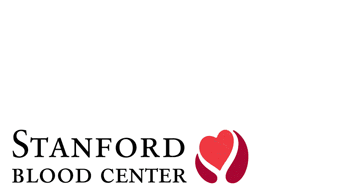The Safe Blood Africa Project: The Trip
By Amanda Baker, Communications Intern, Stanford Blood Center
This is part 2 of 3 in our series on the Safe Blood Africa Project.
Click here to read Article 1: The Safe Blood Africa Project: Background
This summer, BloodSource staff and representatives from the Carmel Valley Rotary Club traveled to Nigeria to continue working on the Safe Blood Africa Project. Led by Dr. Chris Gresens of BloodSource, the team also included Northern California Community Blood Bank CEO Tom Schallert and BloodSource’s Dr. John Watson-Williams, as well as project founder and Rotarian Warren Kaufman. Their destination was Uyo University Teaching Hospital in the state of Akwa Ibom, a region of about four million people in the southern part of the country.
The Safe Blood Africa Project seeks to save lives in Africa by improving the blood banking system with an approach that encompasses bolstering local blood facilities and training local staff. The World Health Organization (WHO) recommends 10-50 donations per year per 1000 population, which is quite a task for Nigeria as the most populous African country. Currently, around 250,000 Nigerians die every year from a lack of adequate blood products, and blood banks are able to supply only 2% of the population’s needs. The majority of patients needing blood are children with severe anemia and mothers with pregnancy-related blood loss.
On their previous assessment trip in 2010, affiliates of the Safe Blood Africa project delivered blood bank refrigerators and generators to provide a safe storage system for collected blood. While such equipment is essential for a successful blood banking industry, it is not sufficient to provide a safe blood supply. Equally crucial components are a steady supply of healthy, eligible donors to provide blood for transfusions and well-trained, knowledgeable staff.
Thus this trip’s expanded objectives were, firstly, to provide substantial education and equipment to bring blood transfusions up to a higher standard in the short-term, and secondly to allow a road map to be developed to improve transfusion medicine in general over a long-term period. Training is to continue in areas of donor recruitment, laboratory work, and medical administration. Donor recruitment is of particular importance, as unsuitable donors can pass along blood-borne diseases such as malaria, hepatitis, and HIV (AIDS) to blood recipients. The current status quo in Nigeria involves recruiting family members and paid donors, but it is crucial to recruit volunteer non-remunerated donors, that is, people willing to donate on their own accord without monetary incentives. Such donors are more likely to be honest in revealing their status as at-risk for blood-borne diseases.
The BloodSource and Carmel Valley Rotary team hopes to return twice a year for five more years. There are many barriers to be overcome challenging transportation infrastructure, existing local bureaucracy, long-lasting power outages, and insufficient air conditioning, just to name a few, but all members are committed to the cause and dedicated to seeing it succeed. The ultimate goal is to help hospitals and blood centers become sustainable and self-sufficient facilities, and to spread a successful model to other medical facilities.
After the start of the year, we will be introducing a new option in our online store, allowing Stanford Blood Center donors to be able to contribute to the Safe Blood Africa Project. Using points earned through each donation, donors will be able to help purchase equipment for blood centers in Nigeria. Click here for more details.
